
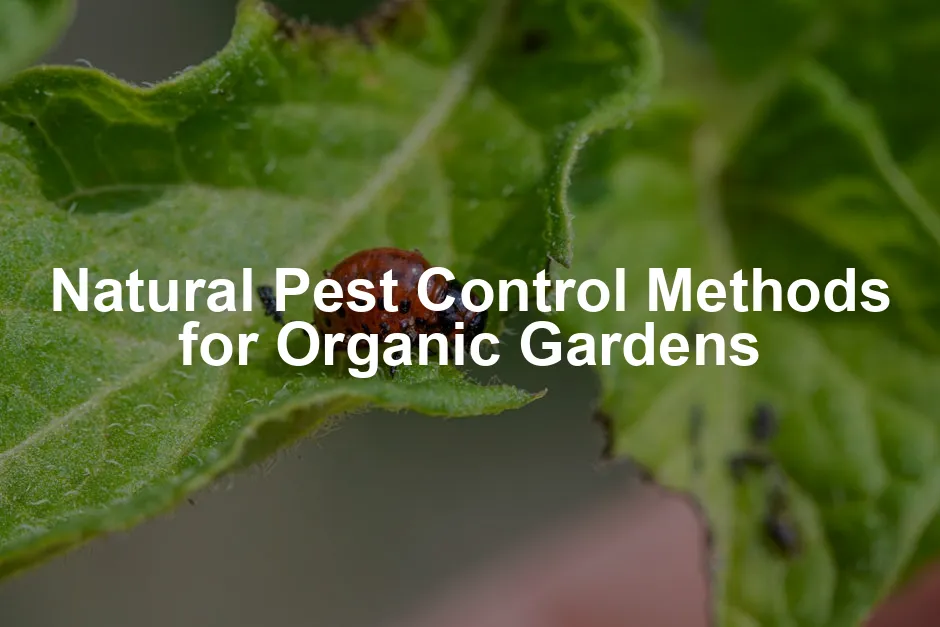
Natural Pest Control Methods for Organic Gardens
Introduction
In the world of organic gardening, maintaining a healthy ecosystem is essential for thriving plants and successful pest management. Organic gardeners often seek effective and natural methods to control pests without resorting to harmful chemicals. This comprehensive guide will explore various natural pest control methods that can help keep your organic garden healthy and productive.
1. Understanding the Importance of Natural Pest Control
1.1 The Ecosystem Approach
Creating a balanced ecosystem is crucial for any organic garden. Think of your garden as a mini universe. Each plant, insect, and microorganism plays a role in this intricate dance of life. Healthy plants thrive in such an environment, making them more resilient against pests and diseases. When plants are well-nourished, they can naturally fend off unwanted visitors.
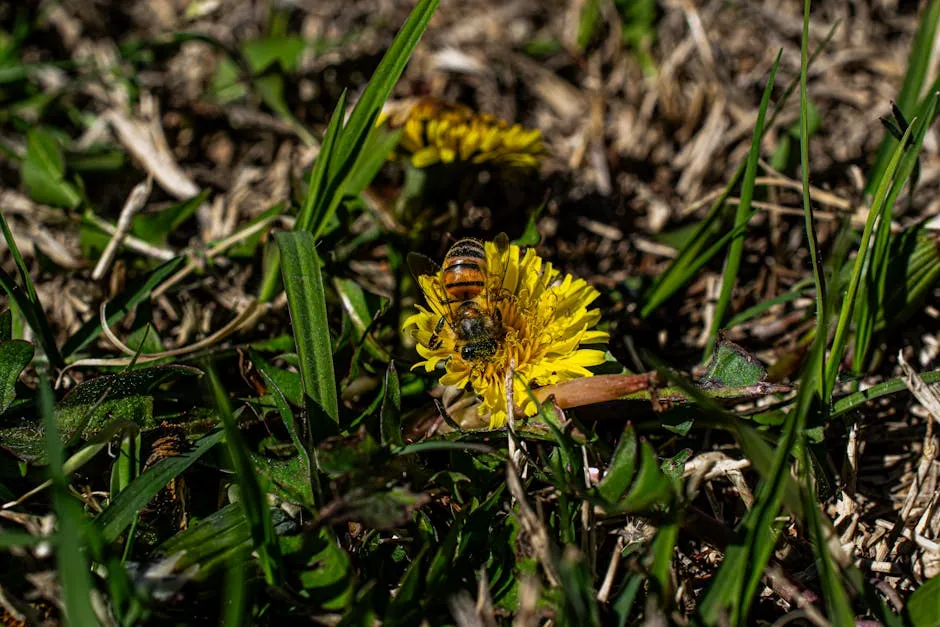
For instance, strong plants often produce specific compounds that deter pests. They also host beneficial insects like ladybugs and lacewings, which feast on harmful bugs. This natural balance reduces the need for chemical interventions. So, the secret to a flourishing garden lies in nurturing this ecosystem, allowing nature to do its magic!
Encouraging biodiversity also plays a key role. A diverse array of plants attracts various beneficial insects, enhancing pest control. In addition, planting flowers alongside vegetables can create a haven for pollinators and pest-eaters alike. By fostering a thriving ecosystem, you’re not just growing plants; you’re cultivating a fortress against pests!
1.2 The Harm of Chemical Pesticides
While chemical pesticides may promise quick fixes, they often come at a steep price. Traditional pesticides can wreak havoc on beneficial insects, pollinators, and even the soil itself. Many gardeners have discovered the hard way that these chemicals don’t just target pests; they can eliminate the good guys too!
Moreover, chemical residues can linger in soil and plants, posing risks to human health. Who wants to munch on veggies treated with toxic substances? Not to mention the adverse effects on local wildlife and ecosystems. It’s a classic case of “you reap what you sow.” Learn more about the impact of chemical pesticides.
By opting for natural pest control methods, you safeguard not only your garden but also the environment. You promote a healthier ecosystem and ensure a safer food supply. Explore how to maintain a healthy garden without chemicals.
Embracing organic practices means saying goodbye to harmful chemicals and hello to a vibrant, flourishing garden filled with life. So, let’s ditch the pesticides and embrace nature’s solutions!
2. Preventive Strategies for Pest Management
2.1 Soil Health and Fertility
Healthy soil is the cornerstone of a thriving organic garden. When soil is rich in nutrients and well-aerated, it fosters robust plant growth, which in turn enhances pest resistance. Plants grown in nutrient-dense soil are less likely to attract pests because they are healthier and more vigorous. Think of it as a natural shield against unwanted intruders!

One way to improve soil health is through composting. Compost adds organic matter, which not only nourishes plants but also improves soil structure. It enhances drainage and increases the population of beneficial microorganisms. These microbes work tirelessly to break down organic material, releasing nutrients that plants eagerly absorb. Check out our guide to composting in small spaces.
Regularly testing your soil can help you understand its pH and nutrient levels. This insight allows you to tailor your amendments, ensuring that plants receive exactly what they need. Explore the best organic fertilizers for your garden.
Mulching is another vital practice. It helps retain moisture, suppress weeds, and gradually adds organic material as it decomposes. Consider using mulch to enhance your garden’s health.
Incorporating cover crops into your gardening routine can also significantly enhance soil health. Plants like clover and vetch can fix nitrogen in the soil, improving fertility. Plus, they provide a habitat for beneficial insects.
By prioritizing soil health, you create a thriving ecosystem that naturally resists pests. Remember, when your soil is happy, your plants will be too!
2.2 Crop Rotation
Crop rotation is a time-tested method that can keep your garden thriving while minimizing pest issues. This practice involves alternating the types of crops grown in specific areas each year. It disrupts the life cycles of pests and diseases that favor particular plants, making it harder for them to establish themselves.
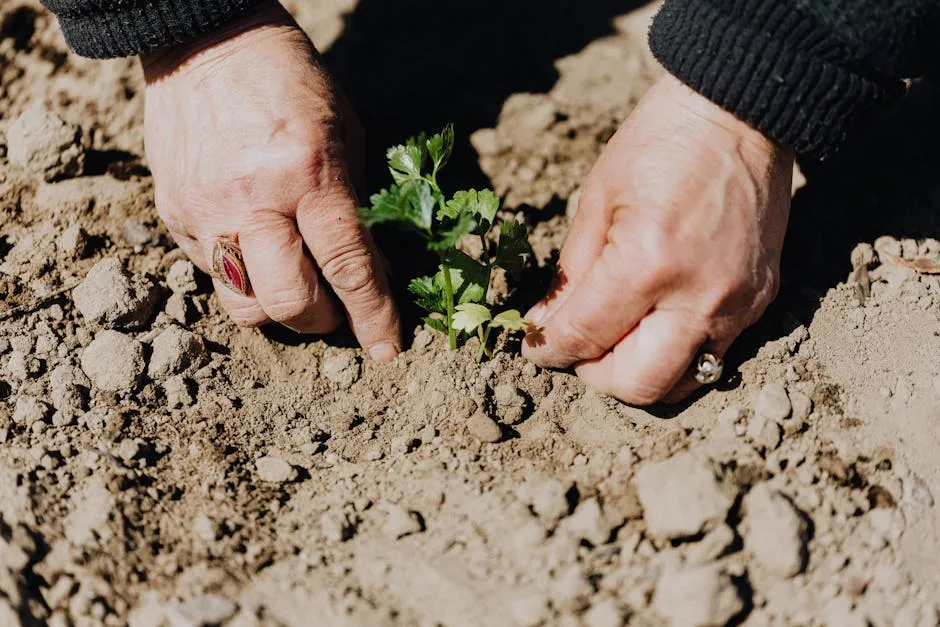
For instance, if you plant tomatoes in one spot this year, consider moving them to a different location next season. This rotation confuses pests that rely on specific host plants for survival. Take potato beetles, for example; if they can’t find their beloved nightshade relatives, they may seek greener pastures—far away from your garden!
Effective crop rotation plans often follow a simple pattern, such as a three to four-year cycle. Start with legumes, which enrich the soil with nitrogen. Next, introduce leafy greens, followed by root vegetables, and finally, fruiting plants like tomatoes and peppers. This cycle not only helps combat pests but also promotes soil health.
It’s essential to keep track of where you plant each crop. Using a gardening journal can help you remember which plants were in each bed. This documentation makes it easier to plan your rotations and ensures you don’t accidentally plant the same family in the same spot too soon.
By embracing crop rotation, you can significantly reduce pest buildup and maintain a vibrant garden. So, grab your garden planner and start mapping out those rotations!
2.3 Planting Resistant Varieties
Choosing pest-resistant plant varieties is a key strategy in organic gardening. These plants have been bred or selected for their ability to withstand specific pests, making them excellent additions to your garden. By opting for these varieties, you can reduce pest problems while still enjoying a bountiful harvest.

For example, consider planting varieties of squash that are less appealing to the notorious squash vine borer. Acorn squash tends to have a solid stem, making it less attractive to this pest. Similarly, certain tomato varieties are more resistant to blight, a common issue in damp conditions.
When selecting plants, consult local extension services or gardening resources to find pest-resistant options suited for your region. This research can save you time and frustration down the line.
Incorporating companion planting techniques can also enhance pest resistance. For instance, marigolds are known to repel nematodes and other pests, making them a fantastic companion for many vegetable crops. Discover companion planting strategies to increase your yield. And if you’re looking to add some marigold seeds, check out these marigold seeds on Amazon!
By prioritizing pest-resistant varieties and companion planting, you can create a thriving garden that naturally deters pests. Learn more about effective companion planting combinations.
So, why not give these resilient plants a chance? Your garden—and your peace of mind—will thank you!
3. Companion Planting Techniques
3.1 The Basics of Companion Planting
Companion planting is a gardening strategy where plants are grown together to enhance growth and repel pests naturally. Think of it as a buddy system for plants! This technique encourages beneficial relationships between different species. Some plants can deter pests, while others attract helpful insects.
One major benefit is pest control. For instance, strong-scented herbs can mask the smell of susceptible plants, confusing pests. Additionally, companion planting promotes biodiversity, leading to healthier gardens. Over time, various plants create a self-sustaining ecosystem. Healthy plants are more resistant to diseases and pests, reducing the need for chemical interventions.
Moreover, companion planting can enhance nutrient uptake. Certain plants can fix nitrogen in the soil, benefiting their neighbors. This method not only keeps pests at bay but also improves soil health. So, why not let your plants mingle? It’s a win-win for your garden and the environment!
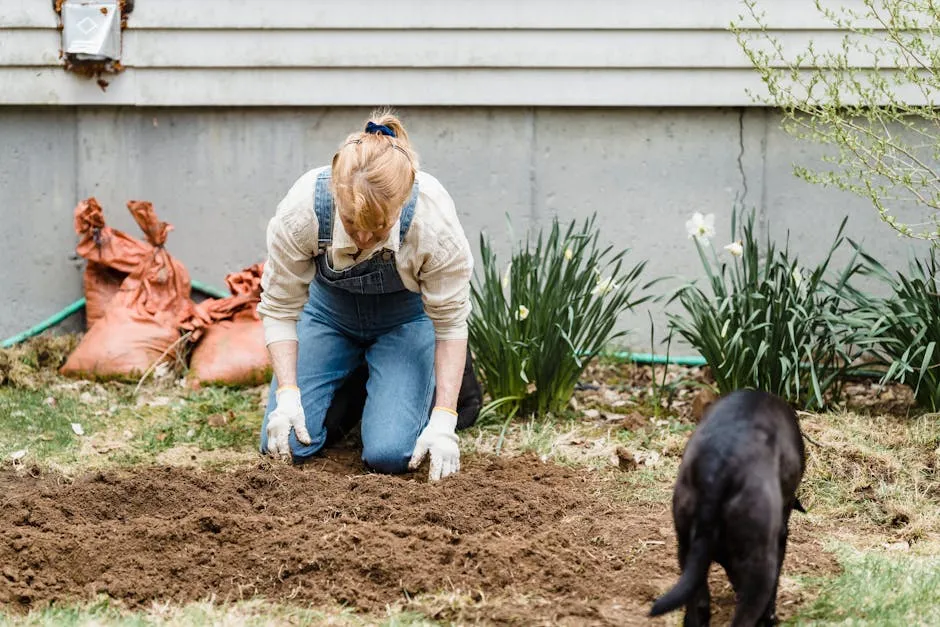
3.2 Effective Companion Planting Combinations
Some plant pairings work wonders in deterring pests and boosting growth. One classic duo is basil seeds and tomatoes. Basil not only enhances the flavor of tomatoes but also repels pesky hornworms and flies. Another popular combination is marigolds with vegetables. Marigolds produce compounds that repel nematodes and other harmful insects.
Consider planting carrots with onions. The strong scent of onions helps mask the aroma of carrots, keeping the carrot flies away. Similarly, planting garlic near roses can deter aphids, safeguarding your blooms. Nasturtiums are excellent trap crops, drawing aphids away from more valuable plants.
Additionally, pairing corn with beans and squash creates a “Three Sisters” planting system. Corn provides support, beans fix nitrogen, and squash spreads out, blocking weeds. This trio not only optimizes space but also strengthens each other’s growth.
Lastly, don’t forget about herbs! Lavender, rosemary, and dill are excellent companions that attract pollinators while repelling various pests. By mixing and matching these combinations, you can cultivate a garden that naturally resists pests and thrives harmoniously.
3.3 Creating a Diverse Plant Ecosystem
Biodiversity plays a vital role in natural pest control. A diverse garden can confuse pests and reduce their populations. When various plants coexist, they create a more complex habitat, making it difficult for pests to thrive. This variety also attracts beneficial insects that prey on harmful species.
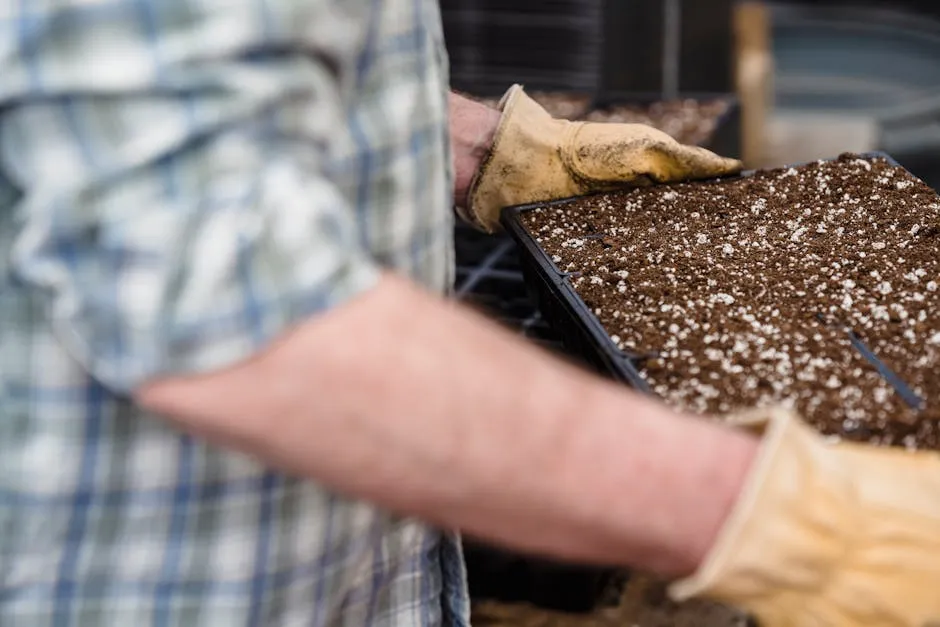
To foster diversity, consider incorporating flowers, herbs, and vegetables into your garden. Plants like yarrow seeds and dill attract beneficial predators, which feast on aphids and caterpillars. Additionally, planting native species can support local wildlife, further enhancing your garden’s ecosystem.
For optimal pest control, aim to include a mix of root, leafy, and flowering plants. For instance, combining carrots, spinach, and radishes can create a multi-layered environment that benefits from each plant’s unique characteristics. Be sure to add aromatic herbs such as mint, chives, and thyme, which can repel pests and attract pollinators.
Incorporating ground covers like clover can also improve soil health and provide habitat for beneficial insects. By nurturing a diverse plant ecosystem, you create a resilient garden that thrives naturally, reducing the need for harmful pesticides. A little diversity goes a long way in keeping pests at bay!
4. Natural Pest Control Methods
4.1 Attracting Beneficial Insects
Welcome to the bug buffet! You may not be hosting, but your garden can be a hotspot for beneficial insects like ladybugs and lacewings. These tiny heroes munch on pesky pests like aphids, making your garden a healthier place. Attracting these friendly flyers is easier than you think.
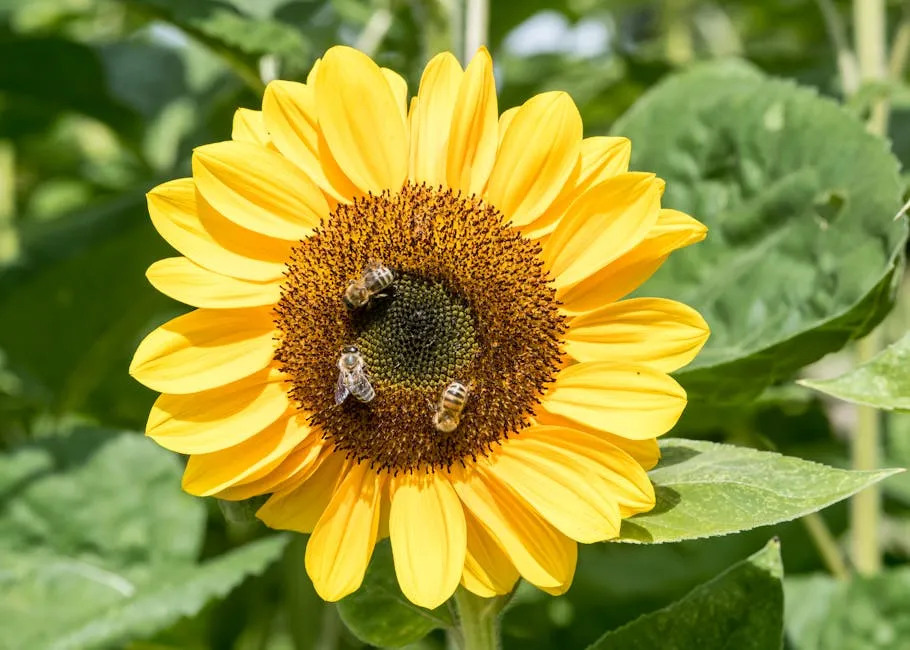
Start by planting nectar-rich flowers. Varieties like dill, fennel, and yarrow are not only pretty but also provide food for beneficial insects. Umbelliferous flowers, with their umbrella-shaped blooms, are particularly effective. They draw in hoverflies and wasps that feed on small pests.
Next, consider providing habitats. Leave some areas of your garden a bit wild. A small patch of native plants or a simple insect hotel can create a welcoming environment. These habitats offer shelter for beneficial insects to lay eggs and thrive.
Avoid using chemical pesticides, as they don’t discriminate. They’ll take out the good bugs along with the bad. Instead, keep your garden chemical-free so that ladybugs and lacewings can do their job without fear.
Lastly, water your plants properly. A well-hydrated garden is a happy garden. Healthy plants attract beneficial insects naturally, as they are less stressed and more resilient. So, plant those flowers, provide habitats, and watch as your garden transforms into a sanctuary for helpful insects. Who knew pest control could be so delightful?
4.2 Homemade Organic Sprays
Let’s get crafty! Homemade organic sprays are your secret weapons against garden pests. They are easy to make, safe for your plants, and effective. Here are a couple of recipes that pack a punch.
Neem Oil Spray: Mix 2 tablespoons of neem oil with 1 teaspoon of liquid soap and a quart of water. Shake well and spray directly onto affected plants. Apply in the evening to avoid sunburn on leaves. Neem oil disrupts pest life cycles, keeping them at bay.
Garlic Spray: Crush 4 cloves of garlic press and steep them in 2 cups of water overnight. Strain the mixture and add 1 teaspoon of liquid soap. Dilute with 1 quart of water. Spray on plants to deter aphids and other soft-bodied pests. The strong scent is a turn-off for many unwanted visitors.
Application Timing: For both sprays, apply every 7 to 10 days or after heavy rain. Early morning or late evening is the best time. This timing helps the spray adhere better.
Remember to test on a small area first to ensure your plants don’t react poorly. With these sprays, you can say goodbye to chemical-laden options and hello to a healthier garden. Your plants will thank you!
4.3 Physical Barriers and Traps
Let’s get down to the nitty-gritty: physical barriers and traps are your garden’s first line of defense! They’re straightforward, effective, and can be made from everyday materials.
Floating Row Covers: These lightweight fabric covers create a barrier against pests while allowing sunlight and moisture in. They’re perfect for protecting seedlings from hungry insects. Simply drape them over your plants and secure the edges with rocks or stakes. This method is best used at the start of the growing season to keep pests at bay.
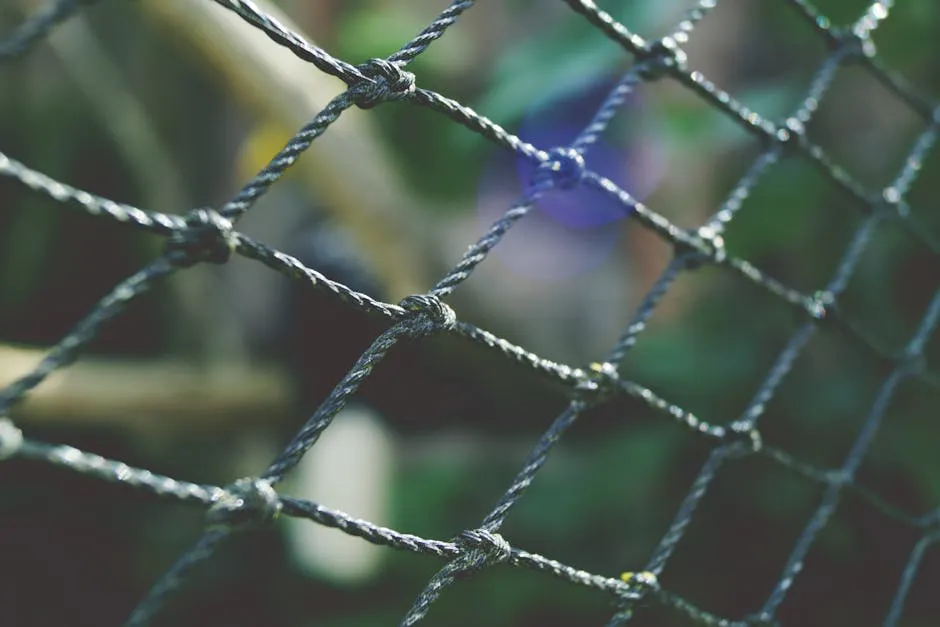
DIY Traps: Beer traps are an old gardener’s trick for slugs. Bury a shallow dish in the ground so the rim is level with the soil. Fill it with beer, and slugs will be drawn in, leading to their untimely demise.
For fruit flies, try a vinegar trap. Fill a jar with apple cider vinegar and cover it with plastic wrap. Poke small holes in the top. The fruit flies will enter but won’t escape.
By using these barriers and traps, you can effectively manage pests without resorting to harmful chemicals. Plus, they add a touch of creativity to your gardening routine. Who knew pest control could be so fun?
4.4 Utilizing Diatomaceous Earth
Diatomaceous earth (DE) is like the superhero of pest control! This powdery substance consists of fossilized algae and works wonders against crawling insects. When pests come into contact with DE, it damages their exoskeletons, leading to dehydration.
To apply, sprinkle food-grade DE around the base of plants, focusing on areas where pests are spotted. Make sure to apply it on a dry day, as moisture can reduce its effectiveness. Reapply after heavy rain or watering.
While DE is an effective pest control method, safety precautions are essential. Wear a mask and gloves when applying to avoid inhaling the fine particles. Keep pets and children away from treated areas until the dust settles.
This natural barrier not only keeps pests at bay but is also safe for the environment. So, sprinkle some diatomaceous earth and watch your pests vanish, while your garden flourishes!
5. Monitoring and Maintenance
5.1 Regular Garden Inspections
Regular garden inspections are essential for early pest detection. Think of it as your garden’s health check-up. Early identification can save your crops from serious damage. Pests can multiply quickly, so catching them in their tracks is crucial.
Start by making a habit of inspecting your plants at least once a week. Look under leaves, check stems, and examine the soil. Pay attention to any discoloration or holes in the leaves. These signs often indicate a pest problem.
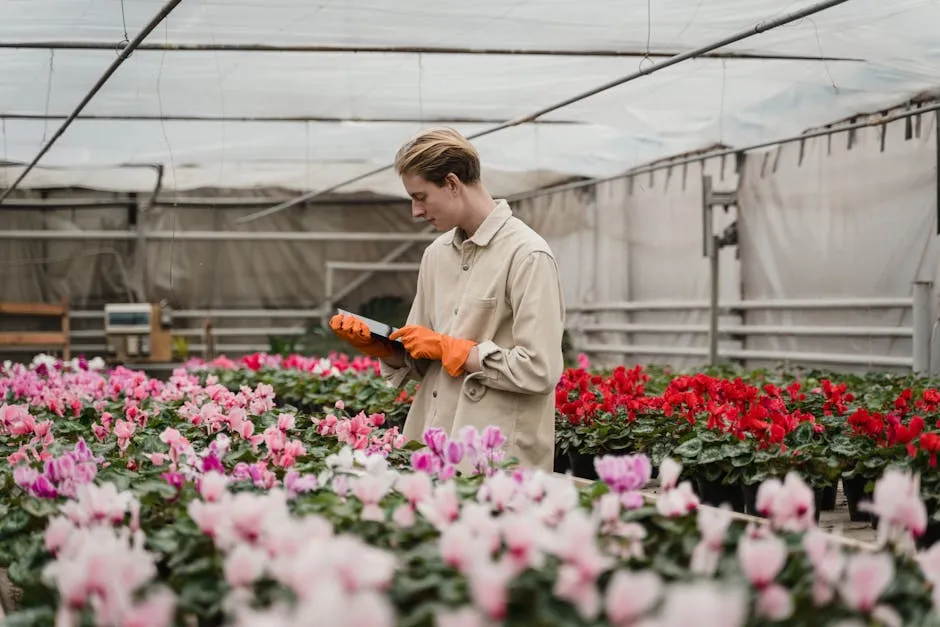
Using a magnifying glass can help spot tiny pests like spider mites or aphids. They can be sneaky little devils! If you notice any pests, consider taking action right away. Handpicking larger pests, such as caterpillars or beetles, can be effective. For smaller pests, a blast of water may do the trick.
Keep a gardening journal to track your observations. Note which plants are affected and when you see pests. This can help you identify patterns and make informed decisions in the future.
Remember, a proactive approach is key. Regularly inspecting your garden not only helps you catch pests early but also encourages you to become more familiar with your plants. The more you know your garden, the better you can protect it from unwanted visitors.
5.2 Integrated Pest Management (IPM)
Integrated Pest Management (IPM) is a holistic approach to pest control. It combines multiple strategies for effective pest management while minimizing risks to beneficial insects and the environment. IPM focuses on prevention, monitoring, and control.
Start by understanding your garden’s ecosystem. Healthy plants are less susceptible to pests. Use practices like crop rotation, companion planting, and maintaining soil health to create an environment that naturally repels pests.
Monitoring is another vital component of IPM. Regular inspections allow you to catch pest issues early. Once pests are identified, it’s time to act. Depending on the severity, you can choose from various methods. Physical removal, homemade sprays, and introducing beneficial insects can all be part of your strategy.
Biological controls, such as ladybugs or predatory wasps, can help reduce pest populations naturally. These beneficial insects are like nature’s little bodyguards. By fostering a balanced ecosystem, you can minimize the need for chemical interventions.
Finally, ensure your methods are sustainable. Avoid broad-spectrum pesticides, as they can harm beneficial insects. Instead, focus on targeted approaches that address specific pests while preserving the health of your garden. With IPM, you can achieve effective pest control while supporting a thriving, organic garden.
FAQs
How often should I apply homemade pest control sprays?
The frequency of application depends on the type of pests you’re dealing with and environmental conditions. Generally, it’s advisable to apply homemade sprays every 7 to 10 days or after heavy rainfall. If you notice a resurgence of pests, increase the frequency until the issue is under control. Different pests may require different approaches, so keep an eye on your plants for signs of trouble.
Are natural pest control methods really effective?
Absolutely! Research and anecdotal evidence show that many natural methods can effectively manage pests. Techniques like introducing beneficial insects, using neem oil, and applying diatomaceous earth have proven successful. While results may vary, these methods often provide a safer alternative to chemical pesticides, supporting a healthier ecosystem and reducing the risk of harming beneficial species.
Can I use these methods in container gardens?
Yes, natural pest control methods are adaptable for container gardens. You can implement strategies like companion planting by incorporating herbs and flowers alongside your vegetables. Monitor your containers regularly for pests, and use homemade sprays or beneficial insects as needed. Just remember to adjust the application rates based on the size of your containers and the number of plants.
What should I do if pests persist despite using natural methods?
If pests continue to be a problem, reassess your approach. Ensure that your plants are healthy and the growing conditions are optimal. Sometimes, enhancing soil health or adjusting watering practices can improve plant resilience. You may also want to try different pest control methods or combine multiple strategies. If all else fails, consider consulting with a local gardening expert for tailored advice.
Please let us know what you think about our content by leaving a comment down below!
Thank you for reading till here 🙂
All images from Pexels



